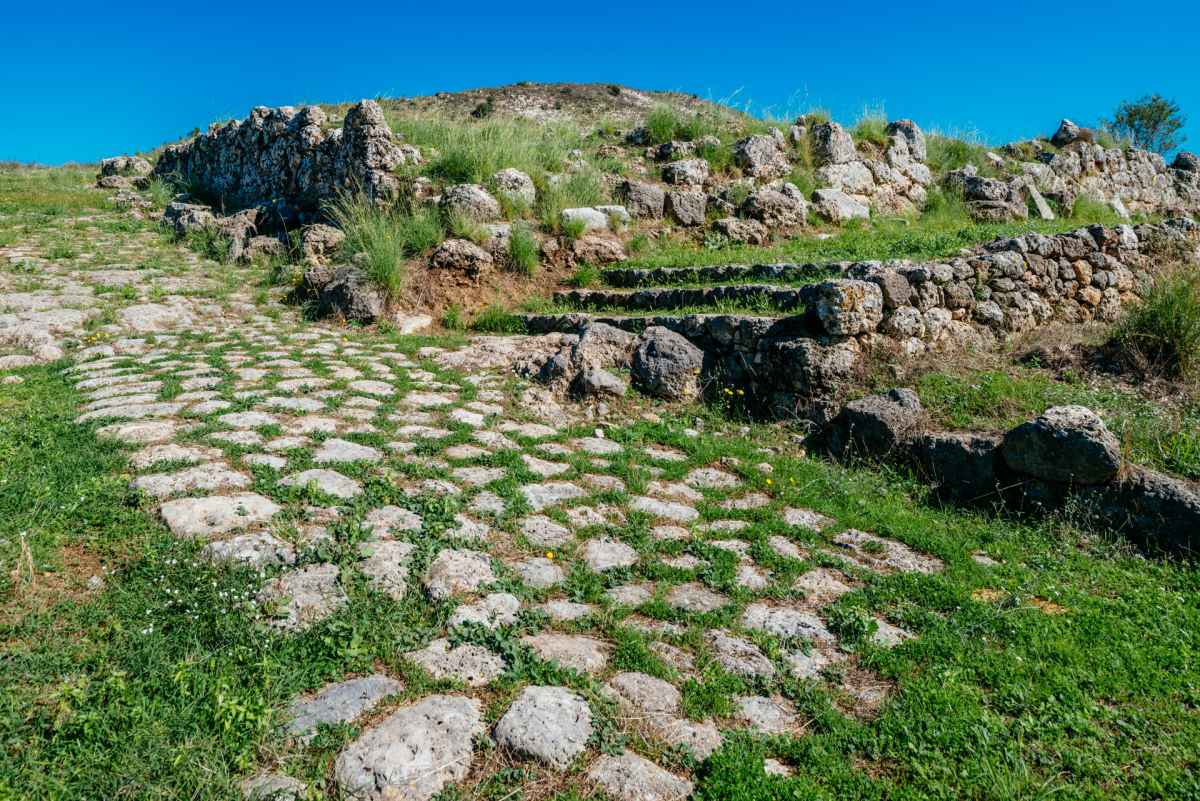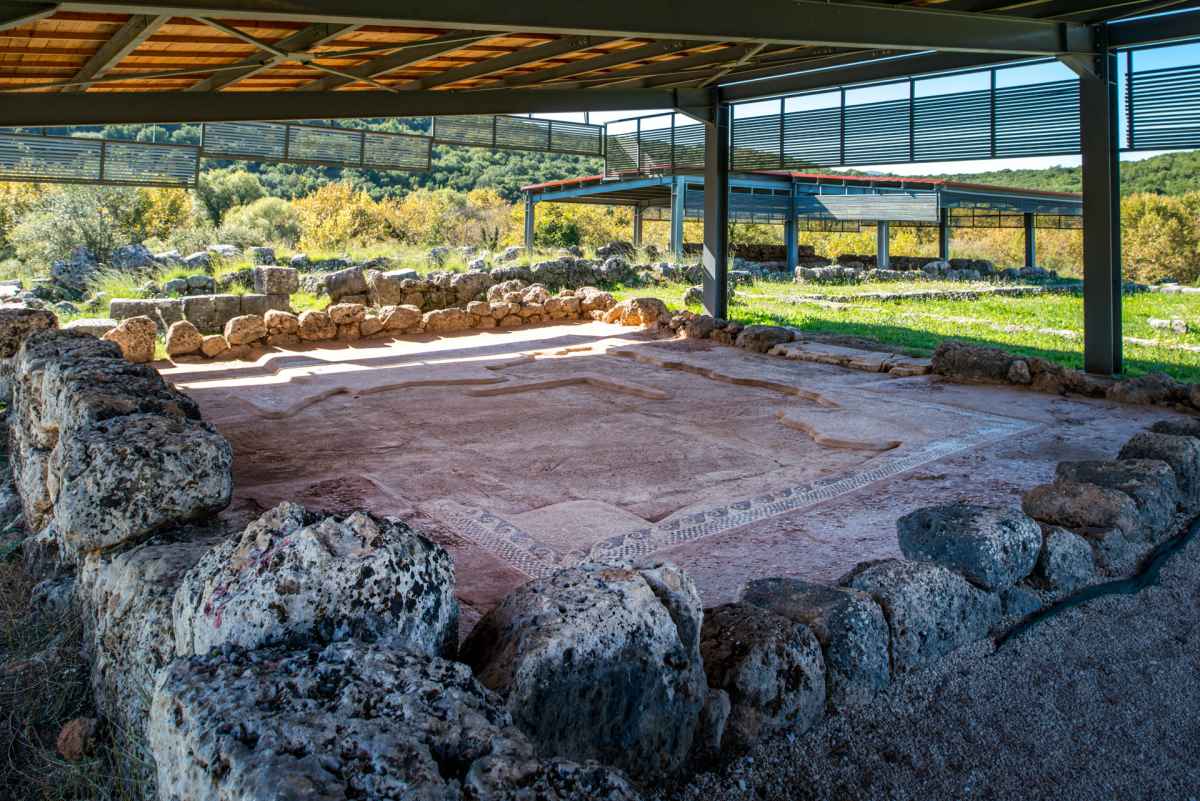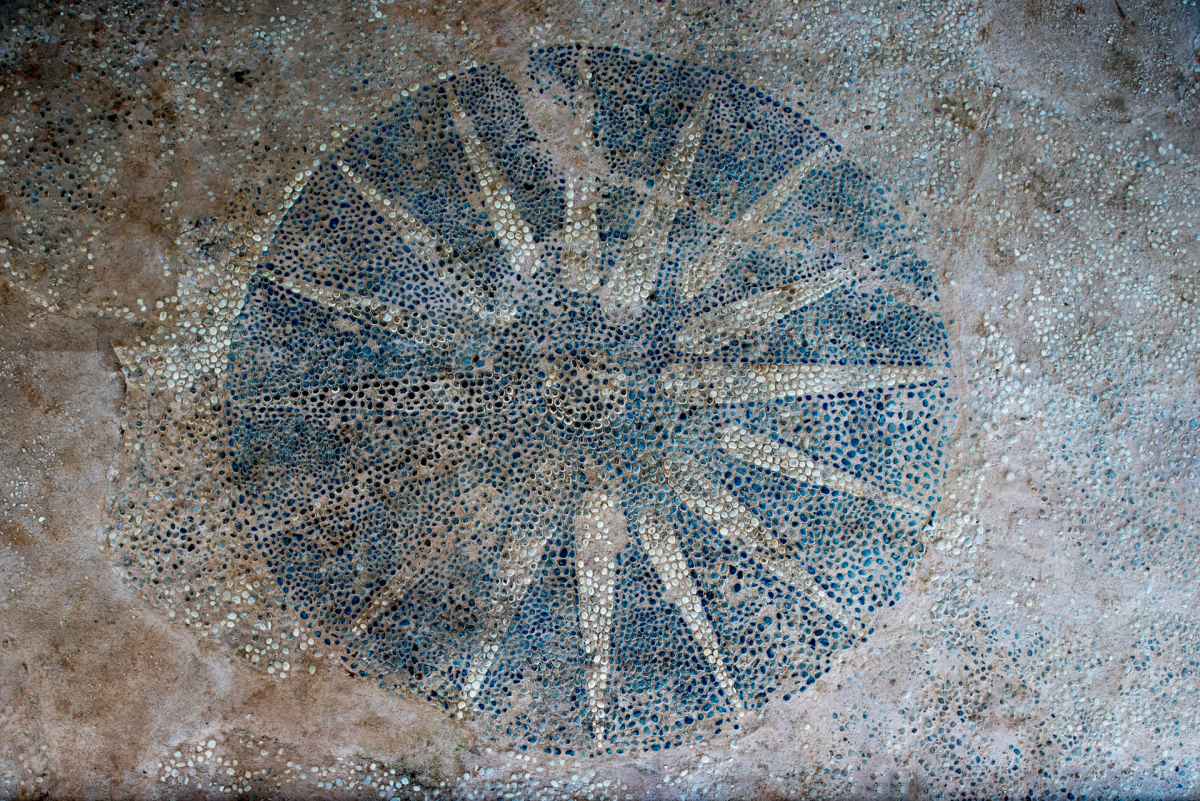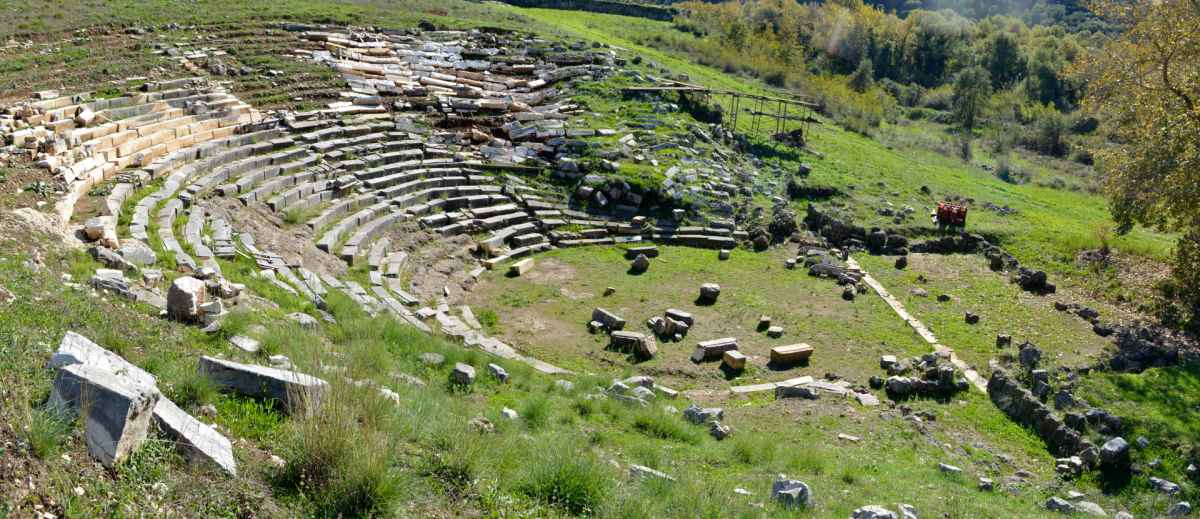Ancient Gitana, built on a privileged spot, the mound of Vrisella of the Filiates Municipality, became the most important settlement of the Thesprotia area during the Late Classical and Hellenistic periods. Populous, organized according to Hippodamian urban planning and strongly fortified, Gitana was the political center of the people of Thesprotia during their peak and until their demise by the Romans in 167 B.C. The most important monuments of Gitana are the Agora, “Building B” as it is found in the bibliography, a large public building, the Parthenos temple also known as the Small Temple, the Rectory and the Theater.
Gitana has been identified as the ruins of Goumani, being the current name of the region. A liberating resolution of the 4th century B.C. by the “Koino ton Thesproton” certifies that the city truly was the political center of Thesprotia at that period. The final confirmation of the ancient city’s name comes from a bronze votive inscription that was revealed at the small two-roomed temple of the western part of the settlement (ΕΝ ΓΙΤΑΝΟΙΣ).
During its short historical course, the city exhibited great political, financial and commercial development, owing to its privileged location. The river Kalamas, that was navigable in ancient times, from its estuary in the Ionian sea to Gitana, ensured access to the sea, but also control of marine and land routes, through which the city was connected to the mainland of Epirus.
The city, although at a naturally fortified spot, was surrounded by a strong polygonal wall, 2.400m long, sporadically supported by towers. According to recent evidence, the city from its very beginning had Hippodamian urban planning. The city inside the walls was developed on different raised terraces, while a cross-wall divided it in the west sector where a great part of public and religious life took place and the east sector where the Agora dominated. Excavation evidence so far highlights the splendour of the monuments that have been revealed in the past 30 years. In the western sector there is the temple (“small temple”) with a vestibule and alcove, and the city’s Rectory which is built around a central yard and includes symposium spaces with mosaic floors but also storage and working spaces. Buildings of a possibly public nature have also been found at the eastern sector of the settlement -conventionally called “lower city”- with a characteristic building with a Doric colonnade and textured architectural adornment. The Agora of Gitana can be found northeast of the cross-wall and has the form of an open square surrounded by an elongated loggia and a complex of stores. The ancient theatre is on the exterior of the western fortification and was used not only for theatrical performances but also for the gatherings of the “Koino ton Thesproton”. It seems to have been initially constructed from stone in the mid 3rd century B.C., as can be seen from architectural similarities with other theatres of Epirus. The stage building had two storeys and a proscenium with semi-columns. The cavea is comprised of 28 rows of seats, divided in two parts by the frieze. It is divided into 7 stands that spread among 8 scales. A great number of seats bear engraved inscriptions on their front sides with people’s names such as Alexandros, Menedamos, Charopidas, Pausanias, Timodamos, Kefalos, Dokimos, Nikomachos, Nikostratos etc. The capacity of the theatre is estimated to around 4.000 spectators.
Concerning artifacts from Gitana, the majority dates back to the Hellenistic period and mainly the 2nd century B.C., indicating their heyday.
The only and extremely limited mintage by the “Koino ton Thesproton” took place in Gitana. They adopted the coinage symbols of the Eleates, the first tribe of Thesprotia that minted coins.
Video
Virtual Tour














